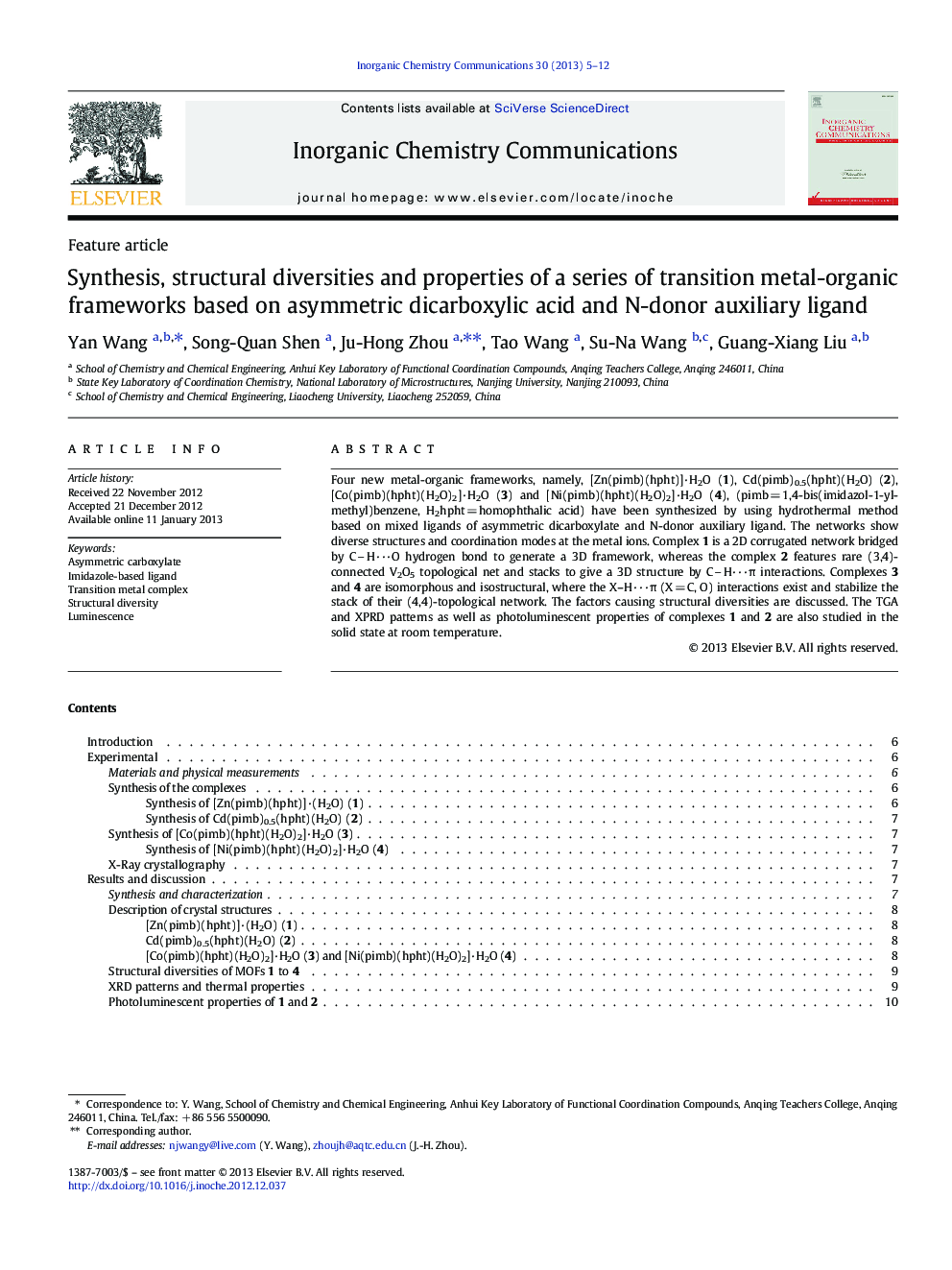| کد مقاله | کد نشریه | سال انتشار | مقاله انگلیسی | نسخه تمام متن |
|---|---|---|---|---|
| 1302010 | 1498960 | 2013 | 8 صفحه PDF | دانلود رایگان |

Four new metal-organic frameworks, namely, [Zn(pimb)(hpht)]·H2O (1), Cd(pimb)0.5(hpht)(H2O) (2), [Co(pimb)(hpht)(H2O)2]·H2O (3) and [Ni(pimb)(hpht)(H2O)2]·H2O (4), (pimb = 1,4-bis(imidazol-1-yl-methyl)benzene, H2hpht = homophthalic acid) have been synthesized by using hydrothermal method based on mixed ligands of asymmetric dicarboxylate and N-donor auxiliary ligand. The networks show diverse structures and coordination modes at the metal ions. Complex 1 is a 2D corrugated network bridged by CH···O hydrogen bond to generate a 3D framework, whereas the complex 2 features rare (3,4)-connected V2O5 topological net and stacks to give a 3D structure by CH···π interactions. Complexes 3 and 4 are isomorphous and isostructural, where the X–H···π (X = C, O) interactions exist and stabilize the stack of their (4,4)-topological network. The factors causing structural diversities are discussed. The TGA and XPRD patterns as well as photoluminescent properties of complexes 1 and 2 are also studied in the solid state at room temperature.
Four transition metal-organic frameworks based on asymmetric dicarboxylate ligand and N-donor ligand have been obtained. The architectures show diverse structures and coordination modes at the metal ions. Various non-covalent interactions play important roles in structure expansion and stabilization of title complexes. The TGA, XPRD and photoluminescent properties are studied in the solid state at room temperature.Figure optionsDownload as PowerPoint slideHighlights
► Four metal complexes based on asymmetric dicarboxylate ligand were synthesized.
► Structral diversities were demonstrated.
► Non-covalent interactions were discussed.
► Photoluminescent properties were investigated.
Journal: Inorganic Chemistry Communications - Volume 30, April 2013, Pages 5–12